As Forth and Tay Disabled Ramblers prepare for an intrepid fundraising adventure in the Highlands, Michael Alexander speaks to the Fife-based volunteer secretary about why it’ll be “worth all the hassle”.
It is regarded as one of Scotland’s great trails.
The magnificent 79 mile/127 km Great Glen Way stretches from Fort William in the south-west to Inverness in the north-east.
Waymarked route
Starting (or ending) in Fort William in the shadow of Britain’s highest mountain, Ben Nevis, the waymarked route follows the country’s greatest geological fault.
It also follows sections of Thomas Telford’s historic Caledonian Canal before reaching Inverness, the capital of the Highlands.
The route can be walked in four to seven days.
Visitors can stay overnight in communities along the Great Glen, and suits all levels of walker.
It’s mostly low-level and follows mainly canal towpaths, forest tracks and roads.
But what challenges does the route throw up for people on mobility scooters?
Disabled ramblers challenge
The question was posed by Brian Watson, volunteer membership and ramble secretary with the Forth and Tay Disabled Ramblers (FTDR), when he came up with the idea of members taking a week to travel along the route in May.
The group, which celebrated its 20th anniversary last year, has opened up the great outdoors to dozens of members since being founded two decades ago.
It runs approximately 15 rambles through the months of April to October each year.
The normal rambles are around five miles long.
During the rambling season of 2021, it was on Brian’s mind that many of the members – although enjoying days out – could perhaps be set a challenge.
They also needed to do something to raise funds and the profile of the group.
After much thought, he came up with the idea of travelling along the Great Glen Way over seven days.
Logistics
“In 2010 in the company of a couple of family members I had walked the route and was aware that apart from a couple of parts the route was suitable for people with disabilities travelling on mobility scooters,” he said.
“I was also aware that the logistics of such an event were huge.
“However, in September 2021, whilst out on a ramble, I broached the idea with our chairperson Sheila Batchelor who was immediately excited by the idea and the challenge that it presented.
“So I took the idea to one of the volunteers who has been with the group since its inception and was amazed when he told me that in 2003 a group from FTDR had travelled along the Great Glen Way.
“There was I thinking I had come up with something unique.
“However, the fact that I wanted to use the event to raise money for the group was something that had not been done.”
Response from members
A few weeks later, Brian put the idea to the membership and the response was “truly amazing”.
He was aware that he was unlikely to end up with 13 members with disabilities actually going on the challenge.
This has proven to be the case with numbers now down to seven due to illness, the unfortunate death of one of their members and other unforeseen circumstances.
Brian admits he’s had a few sleepless nights trying to pull the “logistical nightmare” together.
Accommodation, scooter transport, charging of scooters, dietary requirements, length of time on a scooter, drivers and help by volunteers have all had to be planned for.
However, the members and volunteers left are all “raring to go”.
After overcoming various accommodation challenges, vans have been booked under a deal with Arnold Clark van hire, Kirkcaldy.
A minibus has been booked through Allied Mobility, Glasgow.
The North East Fife group also own a minibus.
As the regulator of this vehicle had recently become a volunteer with FTDR, the vehicle has also been booked for the challenge.
Keeping fed and watered
Meanwhile, during trips to recce some of the paths, Fort Augustus village hall was sourced as a venue for having their evening meal.
One of the ‘scooterists’ is prepared to take on the job of meal supervisor and prepare picnic lunches for each day.
Enquiry with the University of the Highlands and Islands resulted in an offer for the students to prepare each days meal at the university.
They will be collected and taken to Fort Augustus for serving later in the evening.
It is hoped that the ingredients for each day may be supplied by supermarkets in Fort William.
“It was hoped that prior to the start of the event that sufficient funding would be in place to cover the costs of the events,” said Brian.
“However, it became obvious as the weeks went by that this was not going to be possible due to the cost-of-living crisis.
“Discussion with the group including volunteers resulted in everyone agreeing that everyone in the party would deposit £500 in the account and hopefully some external funding would be found.
“To date about 70 letters have been sent out to a number of companies and some donations have been received.
“Applications are also in place with external funding groups and results are awaited.”
What’s their timetable?
The plan is that over seven days they do Fort William (start) to Gairlochy – 11 miles; Gairlochy to Laggan Locks – 11 miles; Bridge of Oich to Fort Augustus – six miles; Fort Augustus to Invermoriston – eight miles; Alltsigh to Drumnadrochit – 10 miles; Abriachan Community Woodland to Blackfold – six miles and Blackfold to Inverness (finish) – seven miles.
This totals 59 miles. The walk itself is 79 miles long.
Unfortunately, however, part of the route after Laggan Locks is closed for two years due to the harvesting of wood from the adjacent hills.
A diversion is in place but the first part would be really uncomfortable for ‘scooterists’ whilst the second half of the diversion is not suitable.
The route from Drumnadrochit to Abriachan Woodland is not suitable for scooters due to two miles being along a footpath beside the A82 and then unsafe terrain after leaving the footpath.
He added: “It’s been something of a logistical nightmare. But I am sure that it will be worth all the hassle in the end!
“I will not be able to confirm that until Tuesday May 9 when everyone is back home, the vehicles have all been returned, the scooters are back in the garage and there is enough money in the account to pay the bills.”
History: Forth and Tay Disabled Ramblers
Forth and Tay Disabled Ramblers was set up in 2002 when two people met at Cameron Hospital in Windygates, Fife, where they were receiving treatment for Multiple Sclerosis.
They were invited to attend an event to open an ‘all abilities’ walking route.
On attending they found that the route was anything but ‘all abilities’ and decided to tackle the problem head on by setting up Scottish Disabled Ramblers.
Five groups initially joined the organisation but, unfortunately, due to a number of problems the Scottish Disabled Ramblers was disbanded, and the groups went their own ways.
Today, however, two of the groups still survive – these being FTDR and Highland Disabled Ramblers based in Inverness.
As the name, Forth and Tay Disabled Ramblers, signifies, they cater for people with disabilities on the borders of the rivers Tay and Forth and also Fife.
At the present time they have around 50 members made up of people with disabilities, family members and volunteers.
Single membership is £18 and joint membership is £25.
The majority of the volunteers are local to Fife whilst members reside in Fife, Edinburgh, Lothians, Tayside and Dundee.
The group owns 19 mobility scooters which are garaged in Glenrothes.
These scooters are various sizes and ages and are serviced regularly throughout the year and are available to members to enjoy the rambles which are organised during the season.
There is a charge of £5 per scooter for the ramble and a £2 fee for attending the ramble.
This is necessary to cover some of the costs as vans must be hired for transporting the scooters.
Members can use their own scooter on the ramble but must produce the necessary insurance before doing so and they still must pay the £2 rambling fee.
How to find out more
Forth and Tay Disabled Ramblers is a Scottish Registered Charity, and survives by donations from members, family, friends and charity trusts and foundations.
However, the annual running costs are expensive and trustees work tirelessly to keep the bank account in the black.
To donate to the Forth and Tay Disabled Ramblers go to https://www.ftdr.uk/
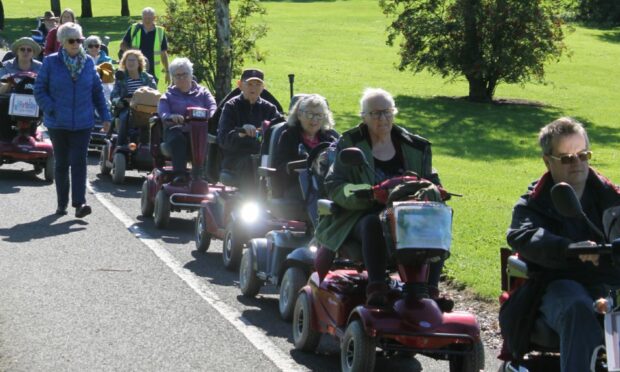
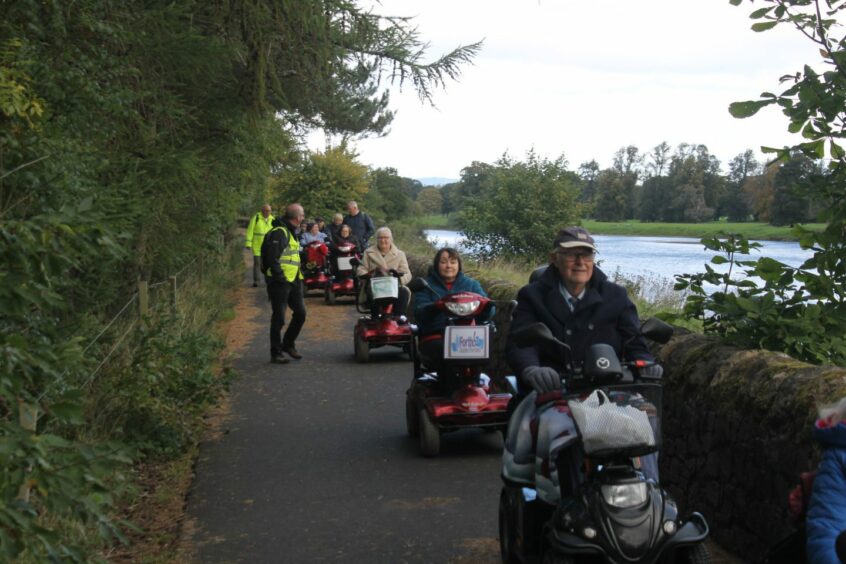


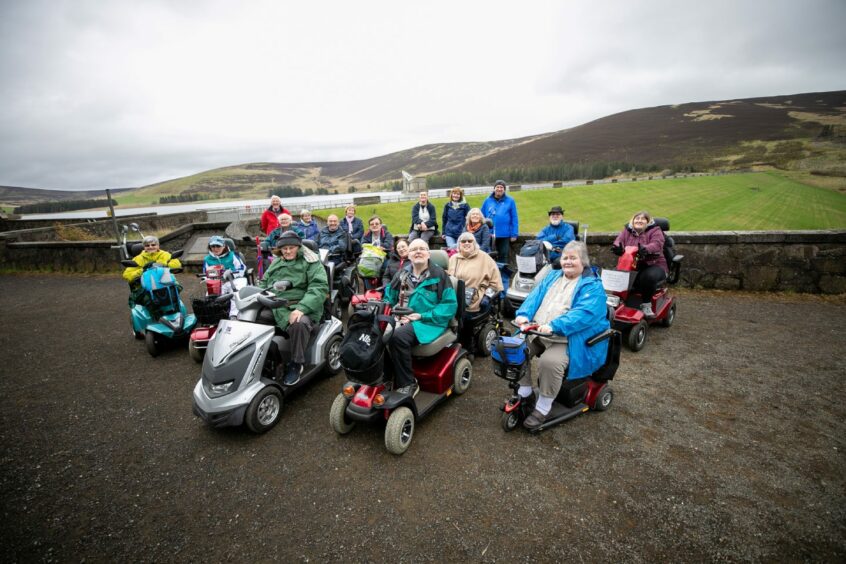
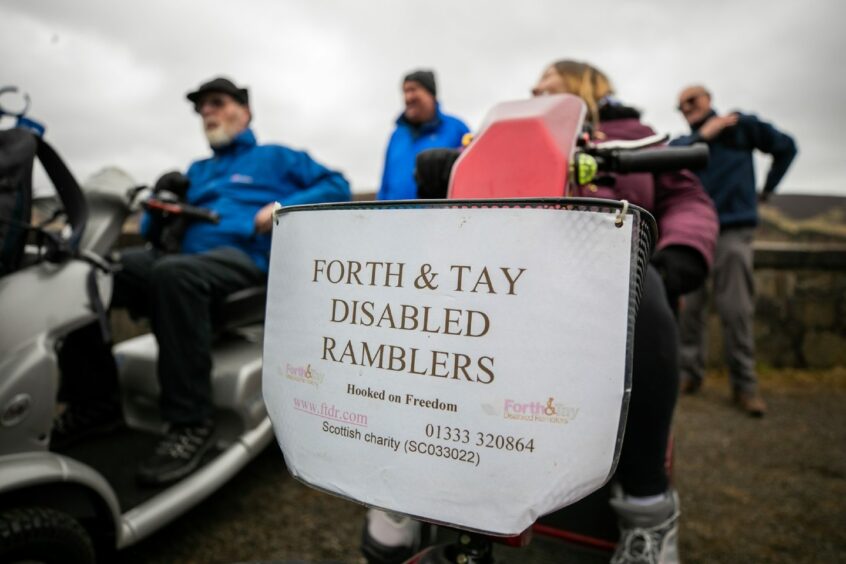
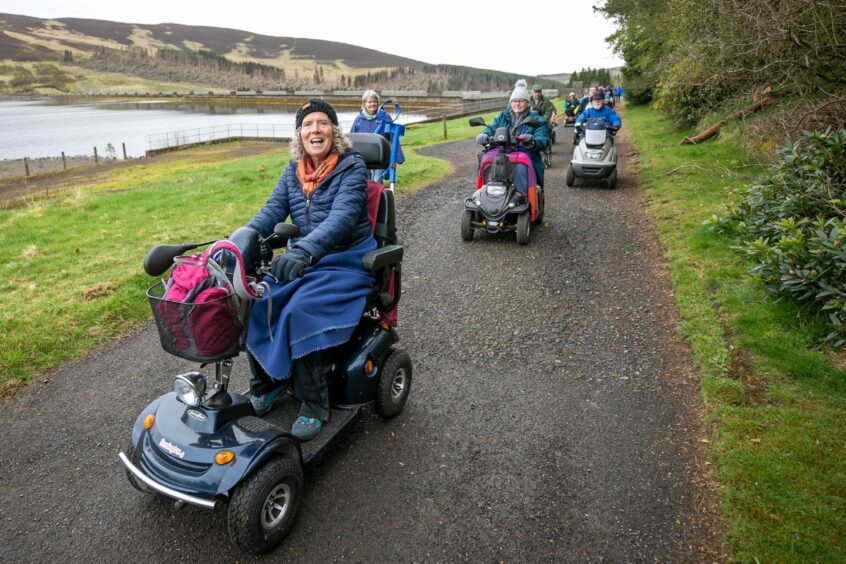


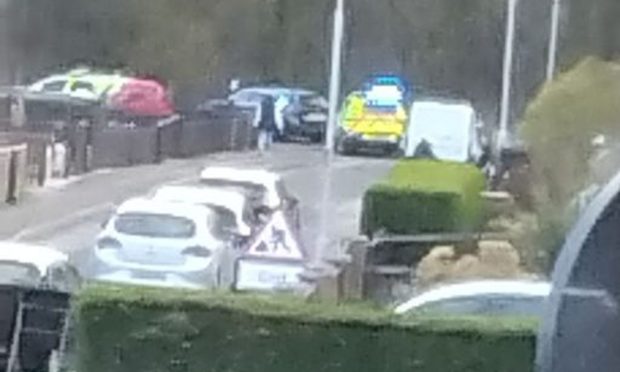
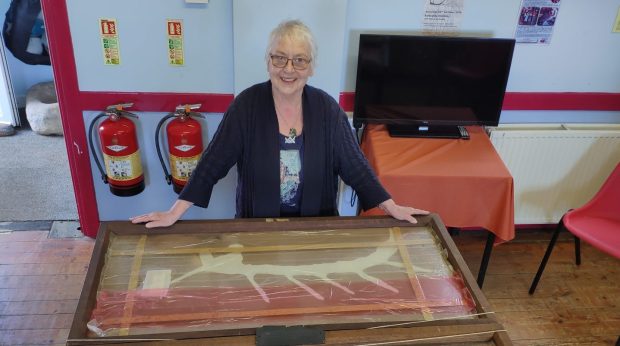
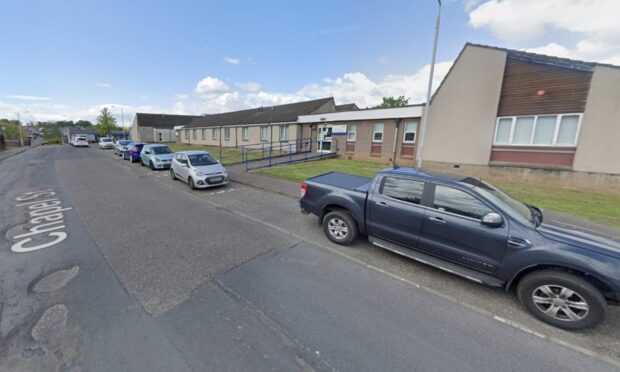
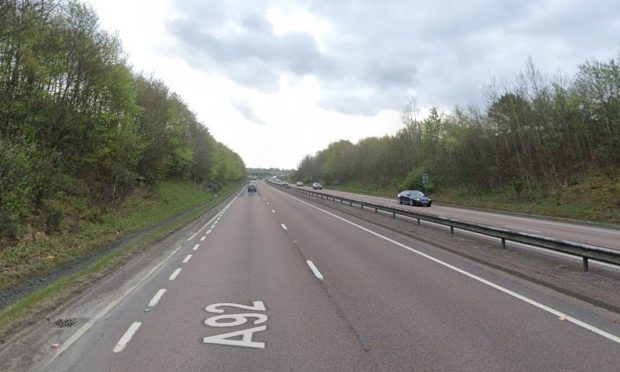
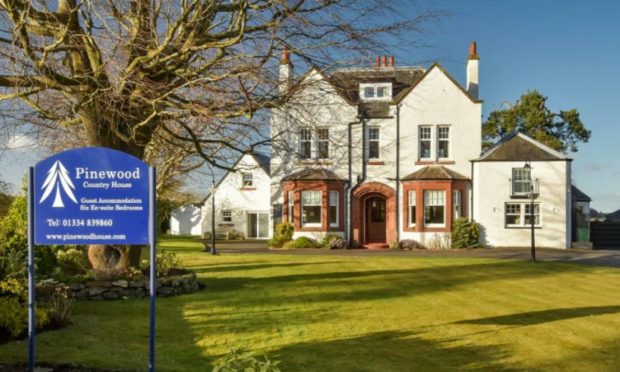


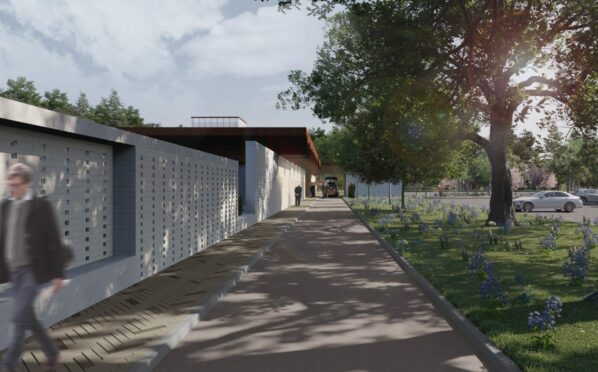

Conversation